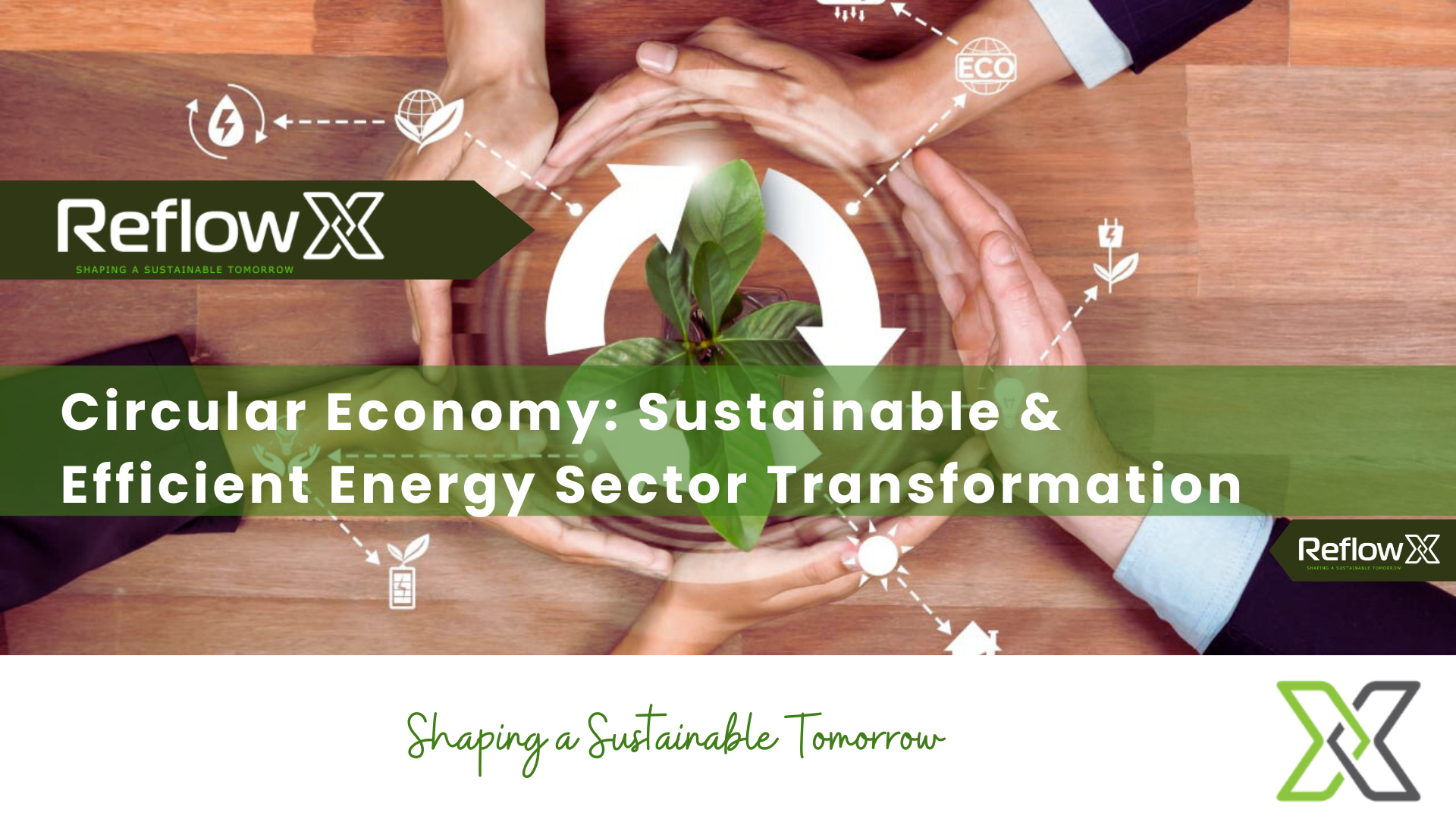
Sustainability is no longer merely a checkbox item for organizations. Globally, there has been a growing commitment to cut emissions and hasten the shift to net-zero (carbon emissions). One of the main areas of attention is the energy Sector.
So, how can organizations move away from emissions-intensive processes and goods? Is it possible for companies to extend sustainable energy? Well, yes, with strategic planning, this is possible. Furthermore, here is your ultimate guide to circular economy energy.
How are Clean Energy and Circular Economy Connected?
The shift to a circular economy doesn’t eliminate energy use. Instead, it encourages individuals to use energy more wisely, use waste heat and renewable energy, etc. However, the energy sector transformation depends on the shift to a circular economy. This is because renewable energy infrastructure grows quickly.
Overall, without clean energy, a circular economy cannot exist. Similarly, without a circular economy, there can be no energy transition. The two are interdependent and inextricably related. This connection is known as the “energy-circular economy nexus.”
Key Sustainability Strategies- Energy Efficiency and the Circular Economy
A circular economy goes beyond just recycling; it involves creating plans for an environmentally friendly world. The new strategies and best practices you can follow are:
-
Monitor Real-Time Energy Sector
Businesses must utilize real-time energy, which is a cutting-edge tool for monitoring and evaluating energy use. It offers quick insights that are necessary for wise decision-making within the organization. For instance, energy managers can see trends, abnormalities, and regions of high usage using real-time data. It also makes it easier to make better judgments, which enhances operations and lessens their impact on the environment.
-
Integrate Artificial Intelligence
The heart of the circular economy lies in embracing artificial intelligence. It allows energy optimization, which is an integral part of sustainability and environmental management. By foreseeing issues and predicting energy demands, artificial intelligence improves energy efficiency. It reduces waste by proactively adjusting energy use based on forecasted data. AI also has a revolutionary impact on carbon footprint management software.
-
Incorporate Sustainability
Another best strategy is to include sustainability in energy management. This approach helped organizations to make a constructive contribution to corporate environmental sustainability.
Additionally, industries can use carbon footprint management tools and implement regular energy audits. They can learn important information about how they use energy, which will help them make wise choices. One can also opt for energy supply chain optimization tactics such as investing in renewable energy sources.
Things to Consider When Managing Energy Sector in the Circular Economy
When it comes to managing energy in the circular economy, here are the things to consider:
-
Energy Efficiency
The demand for energy around the world is rising steadily. It has become necessary to gradually increase industrial processes’ energy efficiency. This will enable the use of as little energy as feasible to lower the primary energy demand.
This involves the need for both process innovation and technological advancements. In addition to saving energy, it will also streamline operations. To promote more sustainability in the energy sector, consider leveraging the surplus equipment marketplace.
-
Waste Heat
Another source of circular energy in industrial operations is waste heat. Waste heat can be utilized internally in district heating systems to meet the heat needs of businesses. This negates the need for additional electricity to cool data centres. However, it takes more than energy efficiency and energy sources to resolve the sustainability issues of our current energy system.
-
Renewable Energy Sector
Any business that wants to be circular or produce circular goods should prioritize renewable energy. This involves energy produced both by biomass and natural forces. Since no limited resources are used in the process of producing energy from these sources, they are circular. Both solar and wind power are essentially limitless, as they are only utilized and not consumed when energy is being generated.
Things to Consider When Managing Circularity in the Energy Sector
When it comes to managing circularity in the energy sector, here are the things to consider:
-
Circular Products
Sustainable procurement plays a circular role in promoting circularity in the energy sector. This includes prioritizing batteries, wind turbines, solar panels, etc. This includes creating durable, recyclable, repairable, and reusable items. This also calls for reverse logistics approaches, such as take-back programs, to give producers access to pre-existing goods and parts or secondary raw materials.
-
Circular Strategies
Moving the energy industry towards the much-needed circular model is crucial. This requires systemic change at many levels, including raw material selection, design choices, production procedures, etc. Therefore, organizations must simultaneously prioritize their resource allocation. As a result, this calls for the creation of focused circular strategies.
-
Circular Technologies
The energy sector must also create and execute new technologies and procedures. This includes enabling products, parts, and materials to re-enter the loop. For example, the wind turbine wings accumulate in landfills as a result of inadequate reuse procedures or large-scale recycling technology. To increase circularity, companies must utilize the energy sector’s current knowledge and technologies and put them to new uses.
Dominate the Eco-Conscious Market of Today
At ReflowX, we are a trusted marketplace for surplus energy sector equipment. We help buyers and sellers connect and exchange used equipment. To promote a circular economy, our platform aims to reduce waste and promote sustainability in the energy sector. With us, you can be guaranteed to be in line with future sustainability goals. To learn more about us, you can reach out to us anytime.
 Prev Blog
Prev Blog